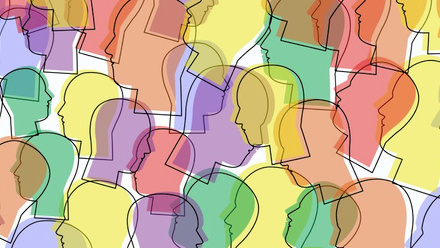Five ways to use technology and gamification to improve social wellbeing

It makes sense to have a broad number of social wellbeing initiatives as, given its personal nature, what works for one person can be an anathema to another. Here are five ways in which employers can use technology and gamification to improve social wellbeing in the workforce.
1. Healthy competition
Whether it’s the number of steps walked, floors climbed or miles clocked up on a static bike, a workplace health and fitness challenge can be a great way to create a bit of a buzz.
By using fitness trackers, smartphones or recording their activity online, employees can challenge each other or work in teams to generate more social interaction and community spirit. This also has the added advantage that, as well as improving social wellbeing, it’ll boost employees’ physical and mental wellbeing.
2. Getting social
Mention social media and many HR people roll their eyes at the thought of employees wasting hours keeping up with their 1,000 plus friends and the latest cat videos. However, work-based enterprise social media such as Yammer, Workplace by Facebook and Jive can strike the right balance between work and play.
Similarly, chat and messenger services such as Microsoft Teams and Slack, help to create more natural interactions between employees than is possible on email. As well as mirroring the way employees communicate and interact outside of the workplace, the sense of belonging and sharing these services offer can really help to increase employees’ social wellbeing.
3. Online recognition
A bit of praise and recognition is a great way to improve an employee’s social wellbeing. Applauding them for something they’ve done, whether it’s a piece of work, a promotion or a personal achievement such as fundraising or running their first half marathon, can enhance their sense of belonging and self-worth.
Certificates and prizes are great but sharing their achievement on the company’s intranet will mean they’re recognised throughout the organisation, adding to the warm glow they’ll already be feeling.
4. Apps appeal
A company-sponsored health and wellbeing app can also be used to bring employees together. By providing everyone with access to health information, online tests and health improvement plans, it creates a sense of inclusion as well as encouraging employees to talk about their health and get together to get healthier.
Inspired by an app, employees might look to set up running clubs, replace their regular Monday morning office-based meeting with a 30-minute walking meeting or share healthy recipes. The outcomes can be varied, benefitting many aspects of their health as well as the social side, but by keeping the content fresh and regularly promoting it, will help to boost the positives.
5. Video action
With more of us working remotely at least some of the week, loneliness and isolation can be an issue. Ensuring regular contact can help to combat this and, while an email or phone call will show you care, video calls are a much more effective way to communicate with remote workers and support their social wellbeing.
As well as being able to see each other, which is much more personal than an email, video calls allow you to read body language. As this can make up more than half of communication, you’re risking misunderstandings and worse if you stick to phone calls or emails.
This article is provided by Legal & General.
Supplied by REBA Associate Member, Legal & General
One of the UK's leading group protection providers with over 85 years' experience.







